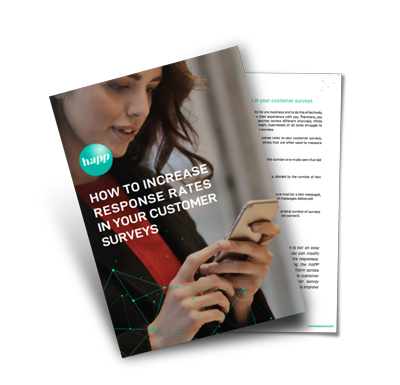Improving customer experience (CX) is a top priority for any business and to do this effectively, you need to understand how your customers view their experience with you. Therefore, you need to collect insight throughout the customer journey across different channels. While customer surveys are a great tool for collecting insight, businesses of all sizes struggle to obtain feedback from their customers through these surveys.
Before we look at the different ways to increase response rates to your customer surveys, it is worth clarifying some of the industry-standard metrics that are often used to measure response levels:
Open Rate: The number of e-mails opened by respondents, divided by the number of e-mails sent that did not bounce
Delivery Rate: The number of text messages (SMS) received by respondents, divided by the number of text
messages sent
Click-through Rate: The number of respondents who clicked on the link provided in an e-mail (or a text message), divided by the number of respondents who opened e-mails (or text messages delivered)
Response Rate: The number of respondents who completed the survey, divided by the total number of surveys sent out to a sample of respondents (assuming the contact details are correct).
Key insights to help you choose the right survey methods for your business:
Choosing the right survey channel for better customer engagement. Here are some of our findings based on 3 different survey channels that we have tested across Europe and the UK with over 2.5 million respondents:
E-mail: Average response rate of 9.6%
E-mail is the customer survey channel of choice for businesses, as almost everyone has an e-mail account and you can easily track who interacts with your outbound e-mails. Also, with a web-based survey link embedded within the e-mail, you can be flexible in the number of questions in your surveys. However, actual response rates are low as users often do not engage with e-mail. Our data shows that the average response rate is just 9.6% for e-mail-based customer surveys.
Text-to-Web: Average response rate of 13.1%
In Text-to-Web, customers receive a text message with a link to a web-based survey. It is an approach that is gaining momentum in the smartphone era and it allows you to create branded and dynamic surveys. Although this approach requires an extra click and recipients need a smartphone to take part, current high levels of smartphone usage makes this less of an issue. Our data shows that the average response rates are higher than e-mail but lower than text message alone. The average click-through rate is 13.9% and the response rate is 13.1%.
Text Messages (SMS): Average response rate of 18.1%
Sending a text message is one of the best ways to reach your customers. Delivery rates reach up to 88% and the average response rate is 18.1%, making it the most effective channel for our customers. In fact, text messages significantly outperform e-mail when it comes to average response rates if you can send them immediately after a transaction, as your customer leaves a store or receives a delivery package.

